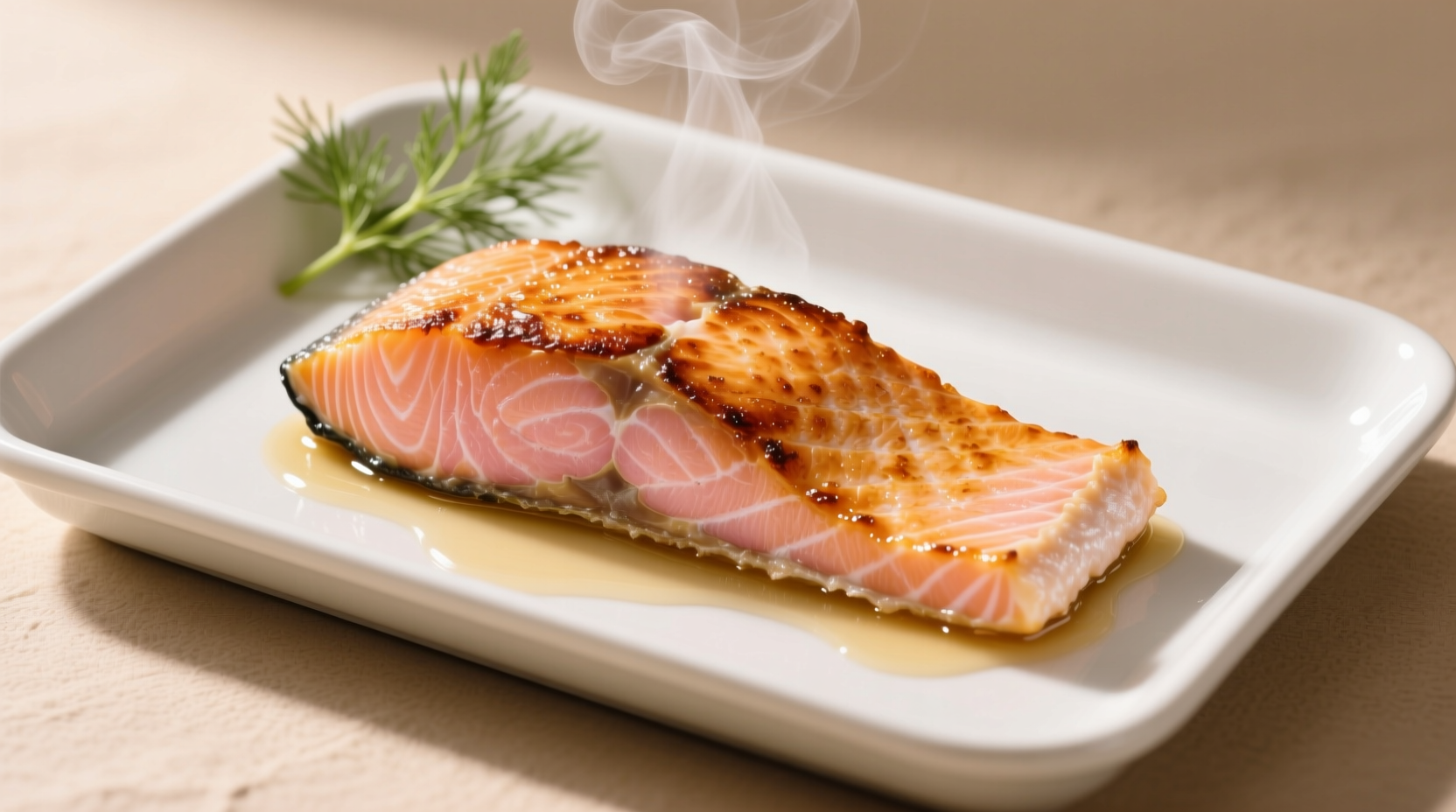Discover exactly how to achieve perfectly cooked salmon every time with this comprehensive guide. Whether you're a beginner cook or seasoned chef, understanding the science behind oven temperatures transforms your salmon from dry and overcooked to moist and flavorful. We'll break down not just the optimal temperature settings, but also cooking times, doneness indicators, and common mistakes to avoid.
Why Temperature Matters for Perfect Salmon
Salmon's delicate texture makes precise temperature control essential. Unlike heartier meats, salmon transitions from perfectly cooked to dry in just minutes. The USDA Food Safety and Inspection Service confirms that fish reaches safe internal temperatures faster than poultry or beef, requiring careful monitoring.
| Desired Doneness | Recommended Oven Temp | Internal Temp | Cooking Time (6oz fillet) |
|---|---|---|---|
| Rare | 325°F (163°C) | 110-125°F (43-52°C) | 10-12 minutes |
| Medium-Rare | 375°F (190°C) | 125-130°F (52-54°C) | 12-15 minutes |
| Medium | 400°F (204°C) | 130-140°F (54-60°C) | 10-12 minutes |
| Well-Done | 425°F (218°C) | 145°F+ (63°C+) | 8-10 minutes |
The Science Behind Salmon Cooking Temperatures
Understanding the temperature transition timeline explains why precise oven settings matter. As salmon heats, its proteins denature in stages:
- 104°F (40°C): Muscle fibers begin contracting
- 122°F (50°C): Connective tissue starts dissolving
- 140°F (60°C): Proteins fully coagulate, moisture loss accelerates
The FDA recommends cooking fish to a minimum internal temperature of 145°F (63°C) for food safety, but many chefs prefer removing salmon at 125-130°F (52-54°C) since carryover cooking raises the temperature 5-10 degrees after removal from the oven. This official FDA guideline ensures safety while preserving texture.

Step-by-Step: Baking Salmon at 375°F
Follow these steps for consistently perfect results using the recommended 375°F (190°C) method:
- Prep your salmon: Pat fillets dry with paper towels (critical for proper searing)
- Season generously: Apply salt, pepper, and optional herbs 15 minutes before cooking
- Preheat oven: Set to 375°F (190°C) with rack in center position
- Prepare baking surface: Use parchment-lined sheet or lightly oiled dish
- Arrange salmon skin-side down: Place thicker parts toward oven edges
- Monitor internal temperature: Insert thermometer into thickest part
- Remove at 125°F (52°C): For medium-rare after carryover cooking
- Rest 5 minutes: Essential for moisture redistribution
Adjusting for Different Salmon Types and Ovens
Not all salmon and ovens behave identically. Consider these context boundaries when determining your ideal temperature:
- Farmed vs. wild salmon: Farmed has higher fat content, requiring 25°F lower temperature
- Convection ovens: Reduce temperature by 25°F from standard recommendations
- Frozen salmon: Add 5-7 minutes to cooking time without thawing first
- Skin-on vs. skinless: Skinless fillets cook 2-3 minutes faster
Professional chefs at the Culinary Institute of America note that oven calibration varies significantly - always verify with an independent oven thermometer. Their research shows home ovens frequently deviate by 25-50°F from set temperatures, dramatically affecting delicate fish like salmon.
Avoid These Common Salmon Cooking Mistakes
Even with perfect oven temperature, these errors ruin otherwise good salmon:
- Overcrowding the pan: Creates steam instead of proper roasting
- Skipping the dry step: Wet surfaces prevent proper browning
- Peeking too often: Each oven opening drops temperature by 25°F
- Ignoring thickness variations: Adjust cooking time by 2 minutes per 1/4 inch
- Not resting after cooking: Causes 30% moisture loss when cut immediately
Temperature Variations for Different Results
While 375°F delivers reliable medium-rare results, these specialized techniques yield different textures:
- Low and slow (275°F): For ultra-tender salmon with custard-like texture
- High heat finish (425°F): Start at 375°F, finish at 425°F for crispy skin
- Reverse sear method: Bake at 250°F until 110°F internal, then sear
Food science expert Harold McGee explains in On Food and Cooking that salmon's fat distribution responds differently to various temperature approaches. His research shows that lower temperatures preserve omega-3 fatty acids better, while higher temperatures create more complex flavor compounds through the Maillard reaction.
How to Verify Perfect Doneness Without a Thermometer
If you don't have an instant-read thermometer, use these visual and tactile indicators:
- Flake test: Gently press with fork - should separate into large flakes
- Color change: Translucent pink becomes opaque salmon color
- Resistance: Should feel slightly springy, not mushy or hard
- Clearing: White albumin appears when approaching overcooking
Remember that carryover cooking continues the process after removal from oven. The American Test Kitchen found that salmon continues cooking at approximately 5°F per minute during resting, making precise removal timing essential.











 浙公网安备
33010002000092号
浙公网安备
33010002000092号 浙B2-20120091-4
浙B2-20120091-4